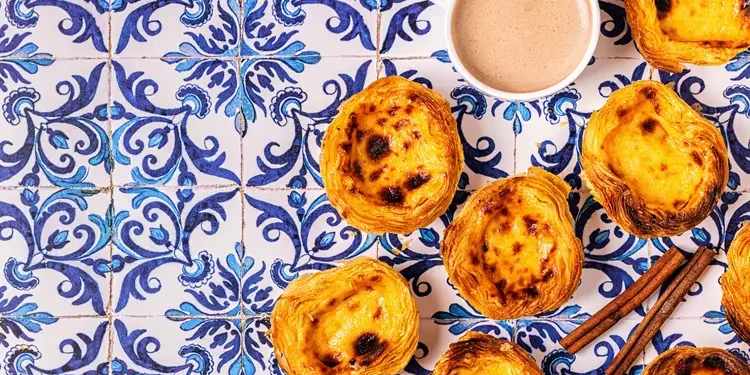When you’re in Portugal, at some point you’re likely to come across the phrase doces conventuais, which literally means “conventual sweets.”
These confections are known for their richness and typically include ingredients such as egg yolks, sugar, almonds, and spices like cinnamon.
The origin of these sweets dates back to the Middle Ages, when convents and monasteries had to be as self-sufficient as possible. That included raising chickens, which meant having an abundance of eggs.
Egg whites were used in clearing wine and stiffening clothes, like nuns’ habits, at a time when there were no ironing boards. This created a tremendous surplus of yolks. Using them to make sweets came naturally. Ingredients like lemon, port, and almonds were already common in traditional Portuguese sweets and often added.
Sugar and spices were fairly easy to access via Africa and Asia but still expensive, which made these desserts special and distinctive—perfect to be sold or offered to wealthy visitors and patrons of those convents and monasteries.
Many of these sweets have names that reflect their religious origins. Famous examples include toucinho do céu (heaven’s bacon), papos de anjo (angel’s chins), and barrigas de freira (nun’s bellies).
In 1820, however, the Liberal Revolution brought with it the expulsion of religious orders from Portugal, and the recipes for these sweets left the secrecy of religious institutions.
Some of the recipes were sold, but some were already known, as wealthy families usually sent their daughters to convents for their education. They simply became slightly more democratic.
Several of these sweets also made their way to other parts of the globe, where they were adapted, like the Portuguese fios de ovos (thin strands of egg yolk boiled in sugar syrup), which became Thailand’s foi thong.
Another example is the Portuguese brisas do Lis, which became quindim in Brazil. The main difference? The first ones use almond meal, and the latter use shredded coconut instead.
A few examples of Portuguese conventual sweets include:
Pastéis de nata: Extremely popular today, these custard tarts are believed to have originated at the Jerónimos Monastery in Lisbon.
Ovos moles de Aveiro: A sweet cream made of egg yolks and sugar, usually sold in a wafer-like shell but also used as filling or topping for cakes and pastries.
Pão de Ló: A light sponge cake made with eggs, sugar, and flour. There are many variations of this cake across the country, with the most decadent ones originating in convents and monasteries.
Toucinho do Céu: A dense almond and egg yolk cake, sometimes containing lard, hence the name, which translates to “heaven’s bacon.”
Sincerely,
Cátia Lima
Contributor, Europe Uncovered











